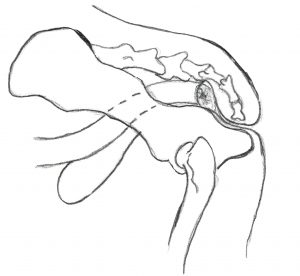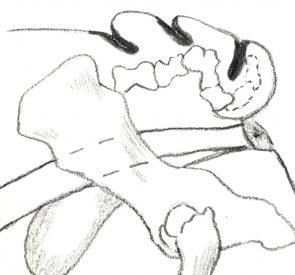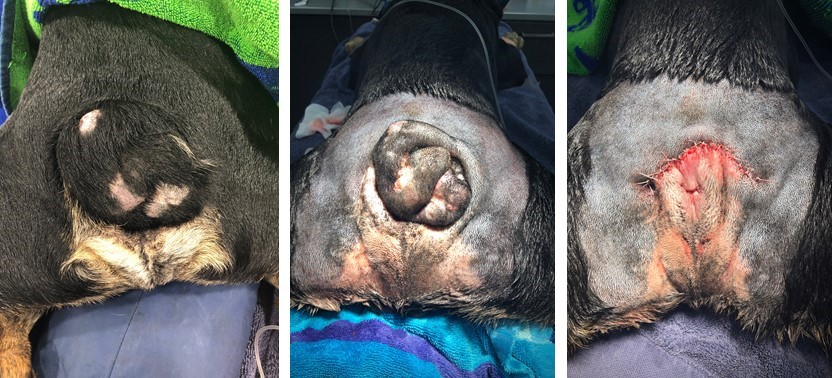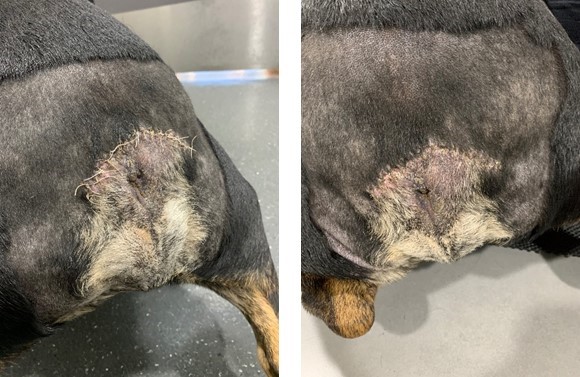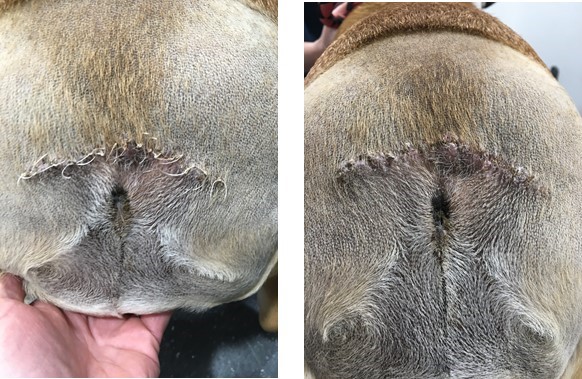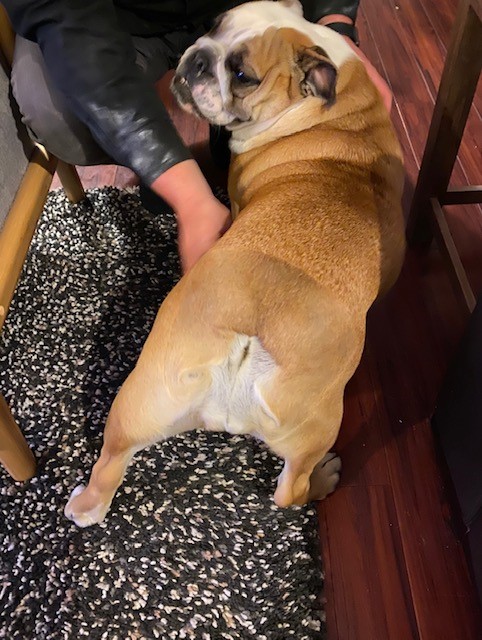Screw tail (also known as ingrown tail or corkscrew tail) is a heritable abnormality where fused tail vertebrae form a downward or spiral curvature, which causes excessive skin folds, an immobile tail and/or anal obstruction. As a result, moist skin infections and impaction of faeces occurs in the skin folds underneath the tail, resulting in itch, discomfort and smell. This can be difficult to manage medically as the immobile tail makes cleaning of this area very difficult. Management is also much more difficult in overweight or obese dogs.
This abnormality occurs most commonly in English and Australian bulldogs, but we also see it in Pugs, Boston Terriers and French Bulldogs.

